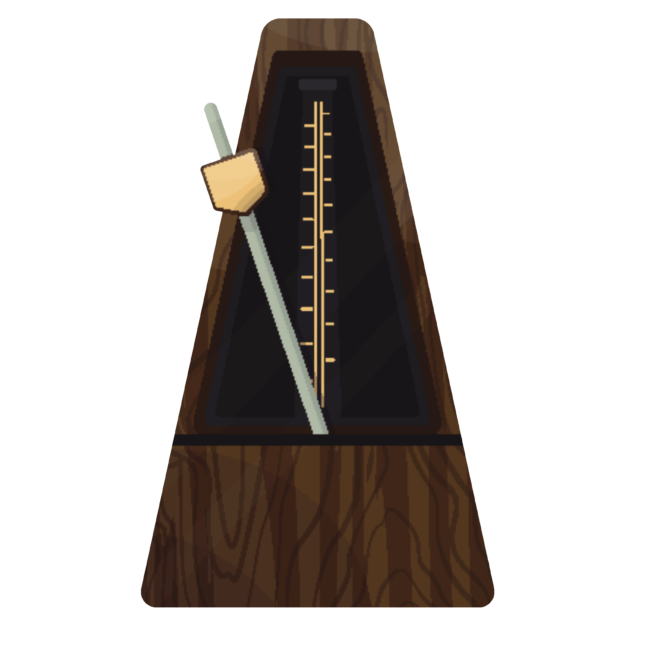Guitar Scales for Beginners: A Comprehensive Guide

Do you know what guitar scales are? This article teaches you the most common scales and how to play them on guitar.
Scales are essential when it comes to improving your guitar skills. They’re the foundation for creating your riffs, solos, melodies, and more! By practicing them, you familiarize yourself with the various strings and frets and improve your finger dexterity.
Countless scales are available to play—you can even create your own.
Let’s descend (or perhaps ascend) into the world of scales, learn about the different types, how you can practice them, and ultimately improve your skill on guitar.
What is a guitar scale?
A guitar scale is an organized sequence of notes you play in ascending or descending order. They provide a framework for soloing and improvisation. They’re among the fundamental exercises for guitarists.
Another essential skill any guitarist needs is the ability to play chords. Learn about them in our blog, Guitar Chords for Beginners: Ultimate Guide.
However, scales should always remain a part of your practice. There are many different scales, each with its unique sound and feel.
Different types of guitar scales.
The guitar is an elaborate instrument, so you can create your own even among the countless scales today.
Despite the endless potential for designing different patterns, there is a general categorization or style of scales.
The most common are the major and minor scales. The major scale consists of seven notes, while the minor has six. Other guitar scales include the blues scale, the pentatonic scale, and the chromatic scale–we’ll go over some more too!
The most common and easy guitar scales.
Within each type of scale, there are easier or simpler versions. However, you can make them more challenging by adding notes or altering the sequence or pattern can make them more challenging.

The most common guitar scales are the major and minor scales. Technically, almost every other type of scale has a major and minor version.
When it comes down to the easiest scale to play, the consensus agrees that it’s the pentatonic scale.
Pentatonic scale
The pentatonic scale is one of the most popular scales for beginners. They’re often referred to as the skeletal version of the heptatonic scale (seven notes) because they consist of five notes per octave.
If you’re curious about pentatonic scales, check out our blog, Pentatonic Scale Guitar.
Additionally, pentatonic scales are perfect for practice as you easily transpose them to different positions on the fretboard. And you can use it for a variety of different play styles.
The Major Scale
The major scale is one of the most important scales in music. It’s the basis for many popular songs, and people use it in various genres. The major scale consists of seven notes (heptatonic).
The first note of the major scale is called the root note, and the other notes are called scale degrees. The major scale is a diatonic scale, which contains five whole steps and two half steps. The half steps occur between the third and fourth scale degrees and the seventh and eighth scale degrees.
The Minor Scale
Similar to the major scale, the minor scale is a scale that contains seven notes, each a whole step apart. People use a type of musical scale in sad or somber-sounding musical pieces. The minor scale is used in many different genres of music, including rock, blues, and jazz.
The Aeolian Mode
The Aeolian Mode is also known as the natural minor scale. On the guitar, the Aeolian Mode starts on the sixth string and fifth fret and uses the following pattern: whole, half, whole, half, half, whole.
Blues scale
The blues scale can be major or minor, with pentatonic variations. Its distinguishing mark is an added flat fifth, or ‘blue note.’ This scale is used–unsurprisingly–in blues and rock music.
Dorian mode
The Dorian mode is a minor scale with the sixth degree raised. It’s often used in blues and rock music. Practicing the Dorian mode refines your soloing and chord-building ability in the blues and jazz styles.
The Mixolydian Mode
The Mixolydian mode is a musical scale commonly used in blues and rock guitar. It’s a great scale to solo in when you want to create a bluesy sound.
How to practice scales on guitar.
When it comes to practicing scales on the guitar, there are a few different approaches that you can take. One approach is to run up and down the scale, starting from the lowest note and working your way up to the highest.

Another approach is using a metronome and practicing playing the scale at different tempos. This is a great way to work on your speed and accuracy.
Finally, you can also practice scales by using a backing track. It offers a feel for how the scale sounds in a musical context.
Regardless of your approach (we recommend trying all of them), it is important to be consistent with your practice. Try to set aside time to work on your guitar scales each day. If you can do this, you’ll be well on becoming a better guitar player.
Guitar scalability.
Scales are an essential part of practicing the guitar. By playing them, you improve your skills on many fronts. Your finger dexterity and strength increase, your positioning becomes more efficient, and your overall ability to improvise and play songs dramatically levels up.
Guitar requires a multifaceted approach. It’s a vast instrument that can create tons of unique sounds. Finding time to practice can be tricky unless you’re a professional musician. With an app, Simply Guitar offers bite-sized lessons that cover everything you need to learn your instrument. Give it a try today!









